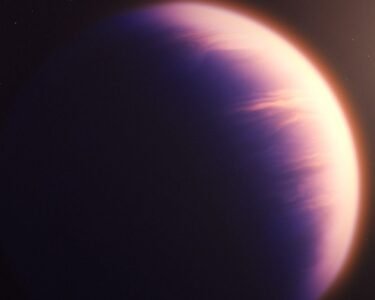Gas and dust squeezed between more giant planets may form smaller planets.
Unveiling the Sandwiched Planet Formation & Insights of Smaller Planets:
“Sandwich Planet Formation” might occur in protoplanetary disks, enormous disks of planet-birthing gas, and dust that spin around young stars. 4.5 billion years ago, the solar system was a disk around the baby sun from which they are formed.
Furthermore, Warwick researchers created this planet birth idea. Sandwiched planet formation states that a planet in the protoplanetary disk constrains dust migration into the flattened gas and dust cloud. Additionally, matter collects between worlds, and dense protoplanetary disks collapse to form them. Gas and dust between the two massive planets would create a smaller intermediate planet.
Sandwiched Planet Formation Sheds Light on Mars and Enigmatic Giants
The team’s idea might explain how planets like Mars form if proven. It may have created planets like Uranus, which are enormous yet surrounded by much larger ones.
Therefore, Protoplanetary disks feature rings and gaps.
“The gaps are where we expect planets, and we know from theory work that planets cause dust rings to form just exterior to them,”
University of Warwick Department of Physics Associate Professor Farzana Meru said:
“What exactly is happening in those rings poses an important question to astronomers worldwide.”
Meru explained that the sandwiched planet formation differs from current models of planet formation, which start at the inside of protoplanetary disks and move to their outer regions.
Henceforth, Meru said:
“What is also really interesting is that we have found examples from exoplanet observations that show this sandwiched planets architecture—here, the middle planet is less massive than its neighbors; it is a reasonable proportion of the systems,”

Will High-Resolution Images of Protoplanetary Disks Change Our Thought on Planet Formation?
The University of Warwick professor noted that planet formation has grown significantly in the past decade. Additionally, the Atacama Large Millimeter/submillimeter Array, a radio telescope made of 66 12-meter radio antennas in northern Chile’s Atacama Desert, has collected high-resolution images of protoplanetary disks.
Moreover, scientists may propose “out there” planet formation theories based on protoplanetary disk imaging and exoplanet sightings due to the field’s expansion.
Meru concluded:
“These images have given us clues about how planets form and evolve. It’s exciting to be at the forefront of this research.”





